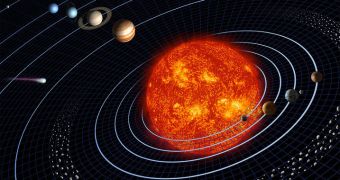For many physicists, determining how the force of gravity acts at small scales, such as in the distance separating two atoms, has been an elusive objective for many years, but new studies are starting to shed some light on the issue.
The investigations are also beginning to reveal that the laws of classical physics may need to be bent a little in order to accommodate the phenomena taking place at these small scales.
Tabletop studies have evidenced that disturbances in the classical behavior of gravity at these scales could hint at the possibility of hidden, extra dimensions in the Universe.
Thus far, the laws of universal gravity, as elaborated by Isaac Newton, have stood up to rigorous scientific scrutiny, and to various tests conducted in most conditions imaginable.
But the smallest scale experiments conducted thus far involved objects placed feet apart from each other. Now, experts propose an experiment that will test gravity at a much smaller scale.
Scientists with the Boulder, Colorado-based National Institute of Standards and Technology (NIST) propose the creation of a device that would operate on a scale of 100 to 1,000 nanometers.
Though the apparatus would analyze gravity at scales larger than that of individual atoms, it would still represent a considerable miniaturization in comparison to other similar experiments.
The team acknowledges that the task is not easy, especially considering the weak nature of gravity. They say that the force is only impressive when applied on a large scale, such as for example in the Sun-Earth-Moon system.
At an atomic or molecular scale, it is weaker that both the strong and weak nuclear forces, and also than the electromagnetic force, LiveScience reports.
NIST scientists want to move past these obstacles by analyzing gravity with the help of a glass bead, which would be kept in suspension in vacuum by special laser beams.
A rod made of gold would then swing past the bead, disturbing its position in the laser matrix, and causing a gravitational pull on the object. This pull can then be measured with great precision.
“The apparatus is an excellent sensor of small forces,” explains scientist Andrew Geraci, who is based at NIST, and is part of the research team.
“It could be significantly – 100,000 times – more sensitive than previous short-range gravity experiments at the micron […] scale, possibly yielding exciting new discoveries,” he adds.
One of the main findings in such studies could be the discovery of new dimensions, that do not exist at large scales.

 14 DAY TRIAL //
14 DAY TRIAL //